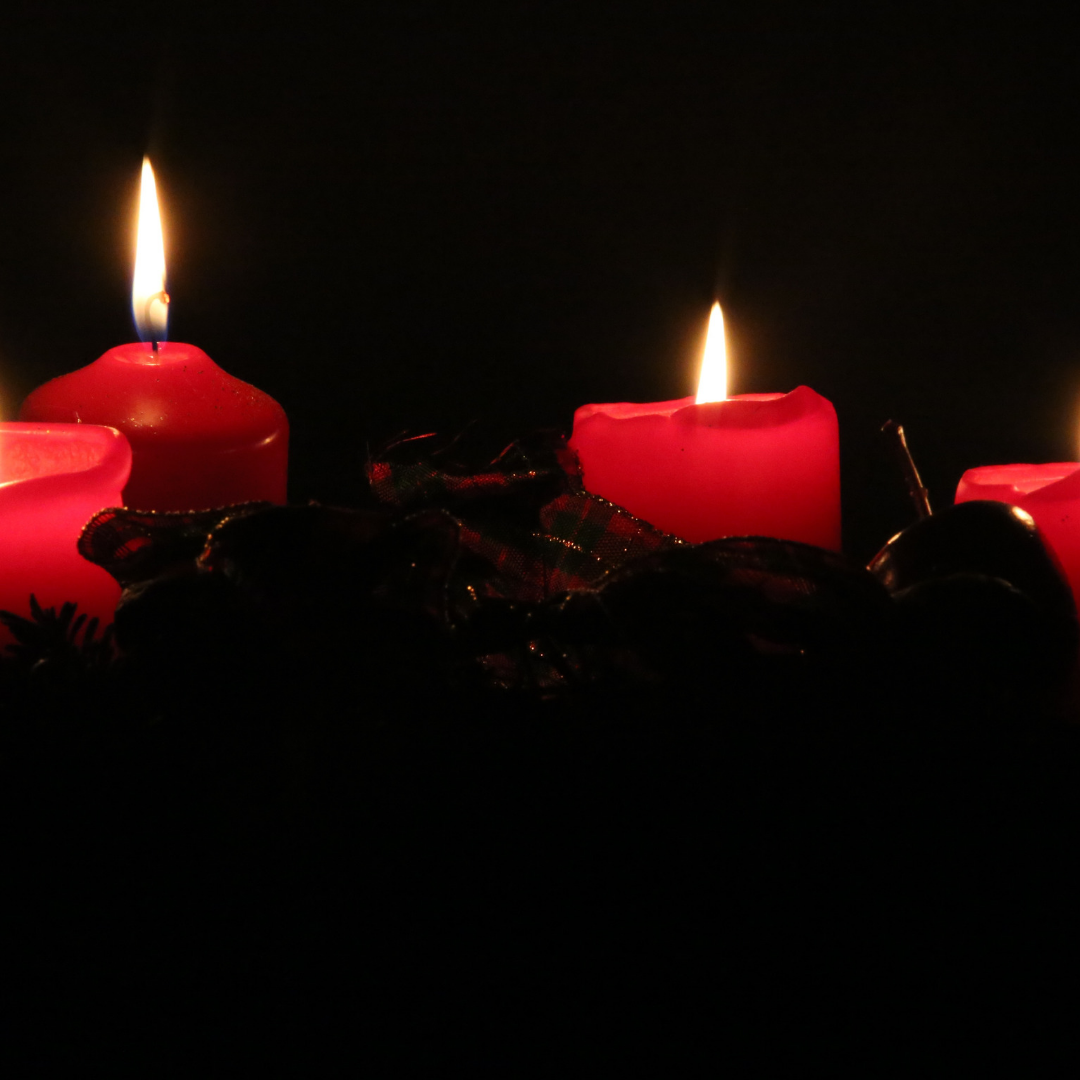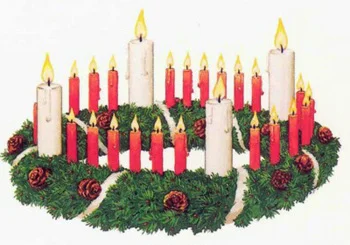Welcome to our 4 part Advent Series. We will be sharing articles written by members from our Brave Worship Community. Each will have a different view and perspective on the weeks ahead. We invite you to join the discussion and share your traditions and knowings of this blessed season! This week will be an overview of the history of the advent wreath by Amanda Blankenship.
I’ve always been a researcher; always the one asking why and how. Well, last year I had the privilege of planning the advent celebrations for our church. My husband and I did not grow up with advent wreaths or even hearing the word “advent” really. But we had been exposed to the tradition as we had gotten older. Our current church celebrated with a wreath every year and as a new campus worship pastor, it would be my duties to plan this for our church. I knew HOW to do it. But what I didn’t know was WHY we did it? And I didn’t feel it right for me to lead our church in a tradition that I had no really knowledge or understanding of. So the research began. This is by no means an exhaustive history, but some tidbits for you to use as you discuss with your family and/or teach your congregation.
Possible Ancient Origins
Long before the time of Christ, pagan communities, worldwide, set aside the weeks before the Winter Solstice as a time to honor the coming of the light.
This was done in a variety of ways. One such custom of the old was to bring your cart wheels indoors during the winter to keep it out of the elements. They would hang them from the ceiling, place evergreens and candles on them, making an impromptu chandelier for their home. They would spin these chandeliers and pray to their gods for the light to be sent back to them. Sound familiar? Many attribute this custom as an origin of a type of advent wreath; a ritual calling light to invade the darkness.
After Christ, we find
“Christians and Pagans sitting together at the table. Finding faith and common ground the best that they were able. Lighting trees in darkness, learning new ways from the old, and making sense of history and drawing warmth out of the cold.”
They had new purpose and understanding of the LIGHT that had come into our darkness.
I’m gonna stop hear and say, perhaps it’s an off-putting thought for you to know of the pagan origins of a lot of the Christian holidays. I know I had a hard time when I was in 7th grade and one of my teachers told the whole class that Christmas trees were pagan and terrible and that we shouldn’t have one. I left in tears that day. He had went too far and messed with something I found sacred. As I have matured...I hope I’ve matured ;)...I’ve come to appreciate the knowledge and understanding of origins and finding the beauty and truth behind why we as Christians hold on to them and make them something of purpose. So, if you are struggling what could be seen as a conflict of interests...I offer a different perspective:
Isn’t it a beautiful thing how God used this longing in their hearts and the need they had and gave us EVERYTHING we ever needed through the gift of His son, the LIGHT of the WORLD?!
Let’s keep going.
According to the Tradition in Action site, our Current and Tradition Advent Wreath, or Adventskran, “propose that its origin was in Germany in the 19th century. Protestant scholars point to a Lutheran minister who worked at a children's mission school in Hamburg as initiating the "first" official Advent wreath in 1839. He built a large wooden ring made out of an old cart wheel with 20 small red and 4 large white candles. The red candles were lit successively every weekday during Advent; on Sundays a large white candle was lit.”
As with any great idea, it took off and many German Protestants began using these wreaths in their homes and schools. The wreath did shrink a bit. Only 4 red candles were used and sometimes a white candle was put in the middle and lit on Christmas.
“By the end of the 19th century Catholics in Germany had adopted the custom as well, and in the 1920s and 1930s immigrants brought that Advent Wreath to the United States.”
Meaning of the Candles
Originally the candles were simply a countdown to Christmas. Now, in liturgical churches the candles are different colors and have different themes. The colors and meanings are not the same across denominations or traditions as we have learned but the most common themes are: Hope, Love, Joy, and Peace. With the four candles representing the 4,000 years between Adam and Eve and the birth of Christ during which mankind waited for the arrival of Jesus.
Color of the Candles
According to the Traditions in Action site, “the use of an Advent Wreath in Catholic homes was encouraged by the progressivist Liturgical Movement in the 1940s and 1950s. Catholic women were encouraged to introduce more symbols and signs of the liturgical seasons in their homes to develop piety and religious customs in an increasingly commercialized society. One woman in particular, Therese Mueller, a lay leader in the Liturgical Movement and strongly involved with the Catholic Workers, is responsible for this change of color.
In her series of articles on "The Liturgical Year in the Home," widely circulated throughout U.S. parishes, she encouraged the practice of the Advent Wreath, a custom borrowed from her native Germany. To "Catholicize" the custom more thoroughly, the red candles were switched to liturgical purple and rose, to match the liturgical colors of penitence and royal kingship. (Katherine Harmon, Lay Women in the Liturgical Movement in the US 1926-69, Liturgical Press, 2014, pp. 268-269).
It became the practice for Protestant temples and homes in the U.S. to use four red candles, and for Catholics to use the purple and pink candles. Some Anglicans, who also adopted the custom in the early 1900s, use blue or white.”
Our Church. Our Homes.
Like most traditions, the customs of Advent have adapted over time. And although research is important, the most important thing is that we understand why we are celebrating and to teach the next generation the importance of taking time to prepare our hearts for the LIGHT that is coming!
In fact, all of this research has encouraged me to buy an advent wreath for our family this year! We just got home and finished setting it up on our table!
Prayer
Soon, our nights grow shorter and our days grow long.
We look once more on these earthy symbols–
firelight and evergreens–
and embrace the glow of hope
That Light and Life will return once again to the earth.
For More Information
http://religion.answers.wikia.com/wiki/Pagan_rituals_concerning_advent_wreaths
http://www.traditioninaction.org/Questions/F070_Wreath.htm
https://www.reformedworship.org/article/september-1986/advent-wreath
https://www.huffingtonpost.com/caroline-oakes/winter-solstice-discoveri_b_2346745.html
Devotional Readings for Each Sunday
Celtic Readings for Each Sunday
http://www.faithandworship.com/Advent/Advent_Celtic_Christian_Celebration.htm
Writer
Amanda Blankenship
www.amandablankenshipmusic.com




